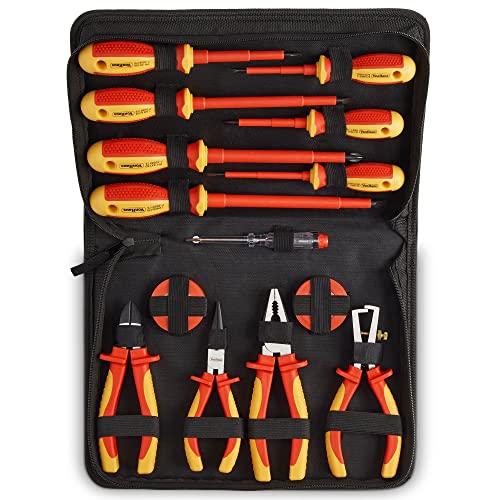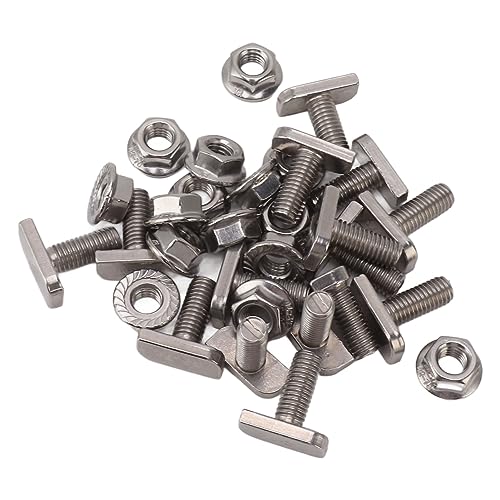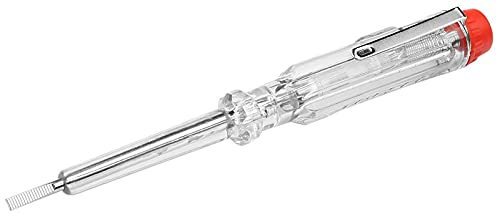You are using an out of date browser. It may not display this or other websites correctly.
You should upgrade or use an alternative browser.
You should upgrade or use an alternative browser.
cable
- Thread starter bob
- Start date

Help Support Talk Electrician Forum:
This site may earn a commission from merchant affiliate
links, including eBay, Amazon, and others.
green-hornet
Distinguished Member
- Joined
- Feb 25, 2009
- Messages
- 3,741
- Reaction score
- 0
I do not know the absolute answer to this but at a guess I would say yes there would be a drop in sound quality.
Probably too little for the average joe like me to notice but someone who listens to the fine details in a recording may pick up the lower quality.
Probably too little for the average joe like me to notice but someone who listens to the fine details in a recording may pick up the lower quality.
alarm cable has a much lower CSA so will effect quality
Pyro
Senior Member
- Joined
- Feb 27, 2008
- Messages
- 136
- Reaction score
- 0
When it comes to speaker cable, its the CSA of the copper that counts.
6-core alarm cable has 6 x 0.22 sq mm, i.e, 1.32 sq mm total, or 0.66 sq mm for 3 cores (which is what you would do for a speaker feed - use 3 cores for each terminal of the speaker).
For speaker feed cable, impedance is not an issue - speakers usually have an 8ohm impedance; amplifiers are designed to drive this. Anyone who says differently needs to study audio electronics deeper.
The reason why CSA counts is down to the application of good old Ohm's Law: The bass speaker requires a lot of current (in audio terms) to move the cone of the speaker; this current is best delivered with a thick cable. The significance of CSA can be proved by comparing, say, 10 metres of 2.5mm cable with 10 metres of alarm cable, but only use 2 cores of the alarm cable.
Here's Pyro's brief guide to speaker cables:
Oxygen free copper... fine if you want to pay a bit more than for T&E.
Fancy super-fine strand cable with attractive transparent insulation..... fine if you want to pay quite a bit more.
Fat speaker cable with directional arrows to show which way round it goes..... audiophool cable at a silly price for silly people with more money than braincells!
Good practical speaker cable for domestic installations:
2.5mm T&E, 2.5mm flexible, 1.5mm T&E, 1.5mm flexible.
If you have a REALLY BIG amp and speakers to match, then go up to 4mm or 6mm, but I doubt the difference will be noticable in a domestic environment.
If you really want to use what the professionals use, then good quality professional speaker cable as used in studio, theatre & mobile applications can be got from Canford Audio, Kelsey Acoustics & Studio Spares.
A memorable studio installation in North London had the main speakers fed with 2H16 pyro....... not subtle!
6-core alarm cable has 6 x 0.22 sq mm, i.e, 1.32 sq mm total, or 0.66 sq mm for 3 cores (which is what you would do for a speaker feed - use 3 cores for each terminal of the speaker).
For speaker feed cable, impedance is not an issue - speakers usually have an 8ohm impedance; amplifiers are designed to drive this. Anyone who says differently needs to study audio electronics deeper.
The reason why CSA counts is down to the application of good old Ohm's Law: The bass speaker requires a lot of current (in audio terms) to move the cone of the speaker; this current is best delivered with a thick cable. The significance of CSA can be proved by comparing, say, 10 metres of 2.5mm cable with 10 metres of alarm cable, but only use 2 cores of the alarm cable.
Here's Pyro's brief guide to speaker cables:
Oxygen free copper... fine if you want to pay a bit more than for T&E.
Fancy super-fine strand cable with attractive transparent insulation..... fine if you want to pay quite a bit more.
Fat speaker cable with directional arrows to show which way round it goes..... audiophool cable at a silly price for silly people with more money than braincells!
Good practical speaker cable for domestic installations:
2.5mm T&E, 2.5mm flexible, 1.5mm T&E, 1.5mm flexible.
If you have a REALLY BIG amp and speakers to match, then go up to 4mm or 6mm, but I doubt the difference will be noticable in a domestic environment.
If you really want to use what the professionals use, then good quality professional speaker cable as used in studio, theatre & mobile applications can be got from Canford Audio, Kelsey Acoustics & Studio Spares.
A memorable studio installation in North London had the main speakers fed with 2H16 pyro....... not subtle!

£249.99
Davlex four 4 pot baine marie large tank 32 litre soup food doner sauce warmer commercial electric
Davlex Catering Equipment

£18.58
Rail for PV Solar Panel Installation Includes End Clamp and Middle Clamp (Set 1(For 35mm))
KA KE LI MAO YI

£765.60
Stalwart DA-YSD3A Commercial Electric Convection Oven with Grill 4 Trays 325x450mm
Amazon.co.uk

£18.57
Rail for PV Solar Panel Installation Includes End Clamp and Middle Clamp (Set 1(For 30mm))
KA KE LI MAO YI

£1,199.99
KuKoo Commercial Baking & Pizza Oven, Large Twin Deck Stone Base, Electric Single/Three Phase
Monster Group (UK)

£25.84
Rail for PV Solar Panel Installation Includes End Clamp and Middle Clamp (Set 2(For 30mm))
KA KE LI MAO YI

£11.99
Saim 265 x 185 x 60mm Waterproof Plastic Power Enclosure Project Case DIY Junction Box
Happy Shopping Shop

£285.60 (£285,600.00 / kg)
Commercial Pasta Boiler Electric 4 Baskets 8 litres 3kW Table top DA-NC8L1
Amazon.co.uk
ianmacd
Well-known member
- Joined
- Mar 15, 2009
- Messages
- 3,877
- Reaction score
- 0
Quite often at audio shows, some manufacturers would use jojo style mains reels with adapters as their speaker cables.
Myself, I prefer chord cables (and I have tried a few) but nothing will beat t&e at the pricepoint. I did make some "funky" cables once from lots of utp cable with special twists but there was an awful lot of stripping wires (4 utp cables is 32 wires each end so 128 strips).
Myself, I prefer chord cables (and I have tried a few) but nothing will beat t&e at the pricepoint. I did make some "funky" cables once from lots of utp cable with special twists but there was an awful lot of stripping wires (4 utp cables is 32 wires each end so 128 strips).
Pyro
Senior Member
- Joined
- Feb 27, 2008
- Messages
- 136
- Reaction score
- 0
Jeez, Andyc, that's one hell of a link! Thanks for posting it. Jaw-dropping.
Looking at some of the products and prices on that website brings up one word only - audiophool.
It's absolutely amazing what some people will spend on hi-fi. The really crazy thing is that when the signal path in a hi-fi system is considered as, say, 0.01% of the cable and electronics that the sound has had to go through to get from the studio microphone to the hi-fi speakers, the remaining 99.99% of the signal path has been in a professional recording studio. Pro studios do not spend 3 grand a metre on speaker cable or a grand a metre on microphone cable; no studio could afford that......
Looking at some of the products and prices on that website brings up one word only - audiophool.
It's absolutely amazing what some people will spend on hi-fi. The really crazy thing is that when the signal path in a hi-fi system is considered as, say, 0.01% of the cable and electronics that the sound has had to go through to get from the studio microphone to the hi-fi speakers, the remaining 99.99% of the signal path has been in a professional recording studio. Pro studios do not spend 3 grand a metre on speaker cable or a grand a metre on microphone cable; no studio could afford that......
that site is a good one if you want some amusement and what people try and sell.
they also have a cable there designed for mains install to replace T&E.... but its not DI!
and its an absolute bargain at only
they also have a cable there designed for mains install to replace T&E.... but its not DI!
and its an absolute bargain at only
sparktobe
Member
- Joined
- May 1, 2009
- Messages
- 54
- Reaction score
- 0
For speaker feed cable, impedance is not an issue - speakers usually have an 8 impedance; amplifiers are designed to drive this. Anyone who says differently needs to study audio electronics deeper!
half of the people can be part right all of the time
some of the people can be all right part of the time
but
all the people cant be all right all of the time i think abraham lincoln said that
ill let you be in my forum if i can be in your forum. i said that.
does anybody know what happened to stereo systems with graphic equalizers?
Last edited by a moderator:
Pyro
Senior Member
- Joined
- Feb 27, 2008
- Messages
- 136
- Reaction score
- 0
"does anybody know what happened to stereo systems with graphic equalizers?"
Good question....... here are my thoughts:
Some hi-fi manufacturers shun tone control / EQ like the plague, resulting in there being less of it available.
The serious hi-fi users do not want to have any form of tone control, therefore reducing the market requirement for graphics.
For hi-fi users who really do want to have a graphic, there are plenty that are made for the pro market - you just need to know where to look.
There was a time many years ago when hi-fi benefited from being able to tweak the frequency response. As time and technology have progressed, amplifiers, speakers and electronics in consumer equipment have all improved so there is less of a need (real and perceived) to tweak something for it to sound better. A real world example of progress is loudspeaker technology: the depth of bass and clarity of treble that is now possible from a speaker that can fit in the palm of a hand could not be achieved 25 years ago.
In the pro side of the music industry, graphics are typically used to tweak the frequency response of a studio control room / theatre / concert hall so that it is "flat"; the graphic is a set-and-forget piece of equipment. Actually, it is a piece of equipment that is set and locked in a rack so no-one can adjust it.
Pyro.
Good question....... here are my thoughts:
Some hi-fi manufacturers shun tone control / EQ like the plague, resulting in there being less of it available.
The serious hi-fi users do not want to have any form of tone control, therefore reducing the market requirement for graphics.
For hi-fi users who really do want to have a graphic, there are plenty that are made for the pro market - you just need to know where to look.
There was a time many years ago when hi-fi benefited from being able to tweak the frequency response. As time and technology have progressed, amplifiers, speakers and electronics in consumer equipment have all improved so there is less of a need (real and perceived) to tweak something for it to sound better. A real world example of progress is loudspeaker technology: the depth of bass and clarity of treble that is now possible from a speaker that can fit in the palm of a hand could not be achieved 25 years ago.
In the pro side of the music industry, graphics are typically used to tweak the frequency response of a studio control room / theatre / concert hall so that it is "flat"; the graphic is a set-and-forget piece of equipment. Actually, it is a piece of equipment that is set and locked in a rack so no-one can adjust it.
Pyro.
Robojin
Well-known member
- Joined
- Jan 22, 2009
- Messages
- 1,122
- Reaction score
- 0
Spot on with this Pyro, my first spell at work was 7 years working for HiFi Markets HQ (NAD), it was funny to see how much you could make people (suckers) pay for speaker wire when you added the important magic 'marketing techno bable', bottom line when punters believe that brand X of cable sounds better you can't stop them they will part with the cash, even if you change just the insulation colour, BTW you know Blue sounds better than Red don't you?Here's Pyro's brief guide to speaker cables:
Oxygen free copper... fine if you want to pay a bit more than for T&E.
Fancy super-fine strand cable with attractive transparent insulation..... fine if you want to pay quite a bit more.
Fat speaker cable with directional arrows to show which way round it goes..... audiophool cable at a silly price for silly people with more money than braincells!
Good practical speaker cable for domestic installations:
2.5mm T&E, 2.5mm flexible, 1.5mm T&E, 1.5mm flexible.
If you have a REALLY BIG amp and speakers to match, then go up to 4mm or 6mm, but I doubt the difference will be noticable in a domestic environment.
If you really want to use what the professionals use, then good quality professional speaker cable as used in studio, theatre & mobile applications can be got from Canford Audio, Kelsey Acoustics & Studio Spares.
A memorable studio installation in North London had the main speakers fed with 2H16 pyro....... not subtle!
I was also involved in the early days of NAD, the Nordic designer of their range removed EQ for two reasons 1, cleaner face panel and 2, He believed his design was so good you did not need to mess with the output
- Joined
- Mar 28, 2008
- Messages
- 14,634
- Reaction score
- 1,313
there is also this cable. its only
Robojin
Well-known member
- Joined
- Jan 22, 2009
- Messages
- 1,122
- Reaction score
- 0
Just looking at that site AndyC posted
http://www.russandrews.com/product.asp?lookup=1&region=UK&currency=GBP&pf_id=1019&customer_id=PAA2665053009537UXSZPZHJOHFLZJEJ
5x 13A fuse
http://www.russandrews.com/product.asp?lookup=1&region=UK&currency=GBP&pf_id=1019&customer_id=PAA2665053009537UXSZPZHJOHFLZJEJ
5x 13A fuse
- Joined
- Mar 28, 2008
- Messages
- 14,634
- Reaction score
- 1,313
The only other difference nowadays is a generation happy enough with a "lesser" quality sound than what even the average hi-fi aimed for 15- 20 years ago..
the MP3 generation want quantity and portability of music NOT audio quality..
and when they do come home or sit in the car with the "docking" station for the MP3 player..
the sound quality of the speaker cable don't matter a fig!!
:|
the MP3 generation want quantity and portability of music NOT audio quality..
and when they do come home or sit in the car with the "docking" station for the MP3 player..
the sound quality of the speaker cable don't matter a fig!!
:|
- Joined
- Mar 28, 2008
- Messages
- 14,634
- Reaction score
- 1,313
Just looking at that site AndyC postedhttp://www.russandrews.com/product.asp?lookup=1&region=UK&currency=GBP&pf_id=1019&customer_id=PAA2665053009537UXSZPZHJOHFLZJEJ
5x 13A fuse
sparktobe
Member
- Joined
- May 1, 2009
- Messages
- 54
- Reaction score
- 0
what size is your trailer sl.well I want a 100m drum.......but they don't do it!!! X(
Ba5****s!!!!!!!!!!!!!!!!!!!!!!!X(X( X(
- Joined
- Mar 28, 2008
- Messages
- 14,634
- Reaction score
- 1,313
you havewell I want a 100m drum.......but they don't do it!!! X(
Ba5****s!!!!!!!!!!!!!!!!!!!!!!!X(X( X(
Similar threads
- Replies
- 17
- Views
- 480
- Replies
- 15
- Views
- 1K
- Replies
- 29
- Views
- 1K
Latest posts
-
13amp outdoor ev charging socket
- Latest: SPECIAL LOCATION
-
-
-
Can anyone ID this National Grid cable?
- Latest: Captain Kirk
-























































